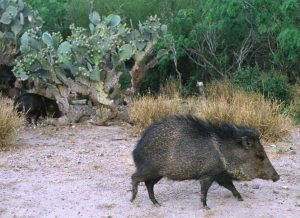State Park Getaway–Choke Canyon State Park
Tuesday, March 9th, 2010This is Passport to Texas
No matter what your outdoor interest, chances are you’ll find it at Choke Canyon State Park. Bryan Frazier is our guide.
Choke Canyon State Park—a great place to go in terms of catfish fishing, which turns on a little later in the spring. Crappie fishing, white bass…Choke Canyon has just risen in the ranks, if you will, in the fishing world as a place to go to really catch lots of different kinds of fish. But, right now, bass fishermen, that’s one of their hot spots to stop and visit on the way. A lot of tournament fishermen show up there.
Another thing about Choke Canyon is, it’s a complete park from a recreational standpoint. You’ve got hike and bike trails, you’ve got a gymnasium, you’ve got screen shelters that have been enclosed with air conditioning, you’ve got lots of different facilities. A group facility, fish cleaning stations—so many different things, depending on what your needs are. Hookups for RVs are good there, with 50 amp service.
It’s far enough south—you’ve got great birding—even some of the things like the green jays and chachalacas…and the wildlife viewing is unmatched. Whether you’re looking for deer, or turkeys or javelina—they’re oftentimes viewable right from the park road in your vehicle. A great place to take the kids to get them familiar with nature. So, Choke Canyon is definitely a place I recommend this time of year to people to visit.
Find more State Park Getaway information on the Texas Parks and Wildlife website.
That’s our show… with support from the Sport Fish and Wildlife Restoration Program…For Texas Parks and Wildlife…I’m Cecilia Nasti.



 Passport to Texas is a
Passport to Texas is a  Passport to Texas is made available by:
Passport to Texas is made available by: